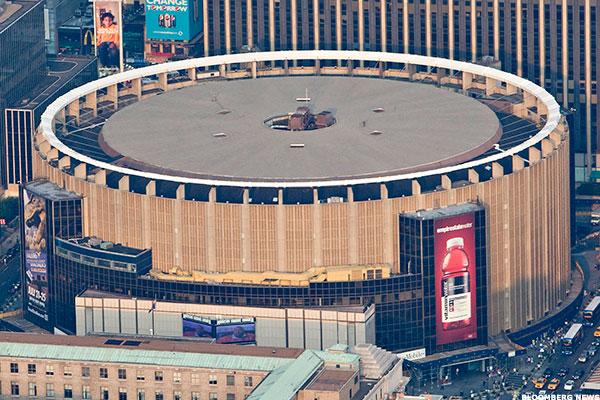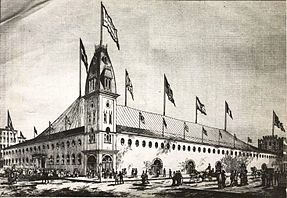History of Madison Square Garden
1 post
• Page 1 of 1
History of Madison Square Garden
Before Madison Square Garden (1874-1879)
Madison Square Garden I (1879-1890)
Madison Square Garden II (1890-1925)
Madison Square Garden III (1925-1968)
Madison Square Garden (1968-Present)
Related thread: Some Long-Ago St. John’s History...
P. T. Barnum's Roman Hippodrome, a predecessor to Madison Square Garden
The site upon which Madison Square Garden was eventually established was originally occupied by a small passenger depot of the New York and Harlem Railroad. The site was vacated by the railroad in 1871 when it was moved uptown. The site was vacant until 1874 when it was leased to P. T. Barnum who converted it into an open oval arena 270 feet (82 m) long, with seats and benches in banks, which he named the Great Roman Hippodrome.
Madison Square Garden I (1879-1890)
Madison Square Garden I
Madison Square Garden was an arena in New York City located at East 26th Street and Madison Avenue in Manhattan. The first venue to use that name had a seating capacity of 10,000 spectators. It operated from 1879 to 1890, when it was replaced with a new building on the same site.
Madison Square Garden II (1890-1925)
Madison Square Garden II
Madison Square Garden II, as it has come to be called in retrospect, was designed by noted architect Stanford White, who kept an apartment there. In 1906 White was murdered in the Garden's rooftop restaurant by millionaire Harry Kendall Thaw over White's affair with Thaw's wife.
The new building including a minaret-like tower modeled after Giralda, the bell tower of the Cathedral of Seville – soaring 32 stories – the city's second tallest building at the time – dominating Madison Square Park. It was 200 feet (61 m) by 485 feet (148 m), and the main hall, which was the largest in the world, measured 200 feet (61 m) by 350 feet (110 m), with permanent seating for 8,000 people and floor space for thousands more. It had a 1200-seat theatre, a concert hall with a capacity of 1500, the largest restaurant in the city and a roof garden cabaret. The final cost for the building, which the New York Times called "one of the great institutions of the town, to be mentioned along with Central Park and the bridge of Brooklyn" was $3 million.
Madison Square Garden III (1925-1968)
Madison Square Garden III
Madison Square Garden was an indoor arena in New York City, the third bearing that name. It was built in 1925 and was located on Eighth Avenue between 49th and 50th Streets in Manhattan, on the site of the city's trolley-car barns. It was the first Garden that was not located near Madison Square.
Ground breaking on the third Madison Square Garden took place on January 9, 1925. Designed by the noted theater architect Thomas W. Lamb, it was built at the cost of $4.75 million in 249 days by boxing promoter Tex Rickard, who assembled backers he called his "600 millionaires" to fund the project. In contrast to the ornate towers of Stanford White's second Garden, the exterior of MSG III was a simple box. Its most distinctive feature was the ornate marquee above the main entrance, with its seemingly endless abbreviations. Even the name of the arena was abbreviated, to "Madison Sq. Garden". The arena was 200 feet (61 m) by 375 feet (114 m), with seating on three levels, and a maximum capacity of 18,496 spectators for boxing.
Madison Square Garden (1968-Present)

Madison Square Garden
The fourth and current Madison Square Garden opened on February 11, 1968, after Irving Mitchell Felt, who purchased the air rights from the Pennsylvania Railroad, tore down the above-ground portions of the original Pennsylvania Station. The new structure was one of the first of its kind to be built above the platforms of an active railroad station. It has a 19,812-seat capacity for basketball.
At a total construction cost of approximately $1.1 billion, MSG has been ranked as one of the 10 most expensive stadium venues ever built.
Related thread: Some Long-Ago St. John’s History...
Dayton Flyers . . . UD Fieldhouse (1950 – 1969) . . . UD Arena (1969 – Present) . . . Transform UD Arena
-

Fieldhouse Flyer - Posts: 1389
- Joined: Tue Apr 01, 2014 5:11 am
1 post
• Page 1 of 1
Return to Big East basketball message board
Who is online
Users browsing this forum: Google [Bot] and 21 guests




